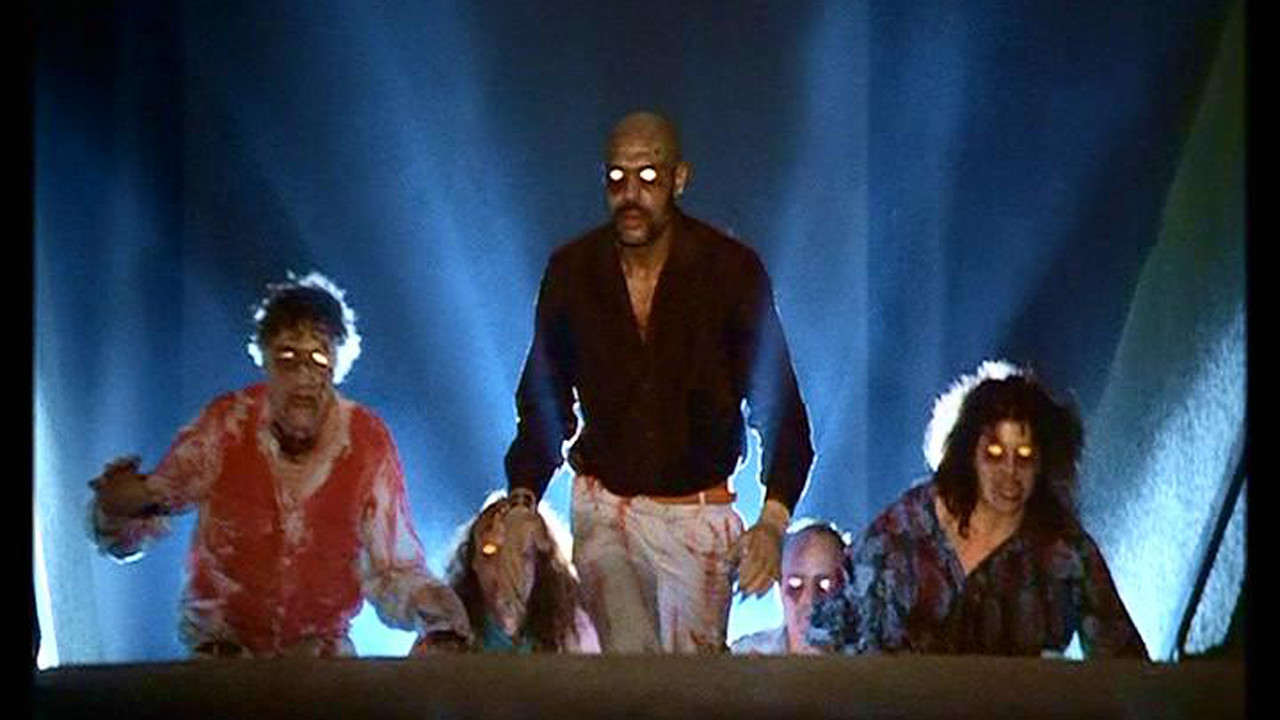As in many corners of the internet, October is horror movie country here at Luddite Robot. For the past two years, we’ve tried to be rigorous about following a movie-a-day Shocktober regimen, with categories for inclusion and various bells and whistles.
But 2018 finds us a bit exhausted with everything. (It’s not an uncommon condition). On top of that, the huge swath of genre offerings that rely on sexual violence as a character motivator or narrative crutch, never their most admirable quality, look particularly grotesque this October.
Still, at least one of us looks forward to the horrors of fall all year — you can try to figure out which from the number of write-ups below; it’s a fun game! — so we’ll be charting the films we get to. There’s also an argument to be made that horrifying times are precisely when we should examine the horrors we project on to screens. This Shocktober, it’ll still be mostly first-watches, hopefully representing a range of horror aesthetics and across time and place. We’ll see what we find scary this year. Here’s Shocktober batch #1.
Rick’s entries
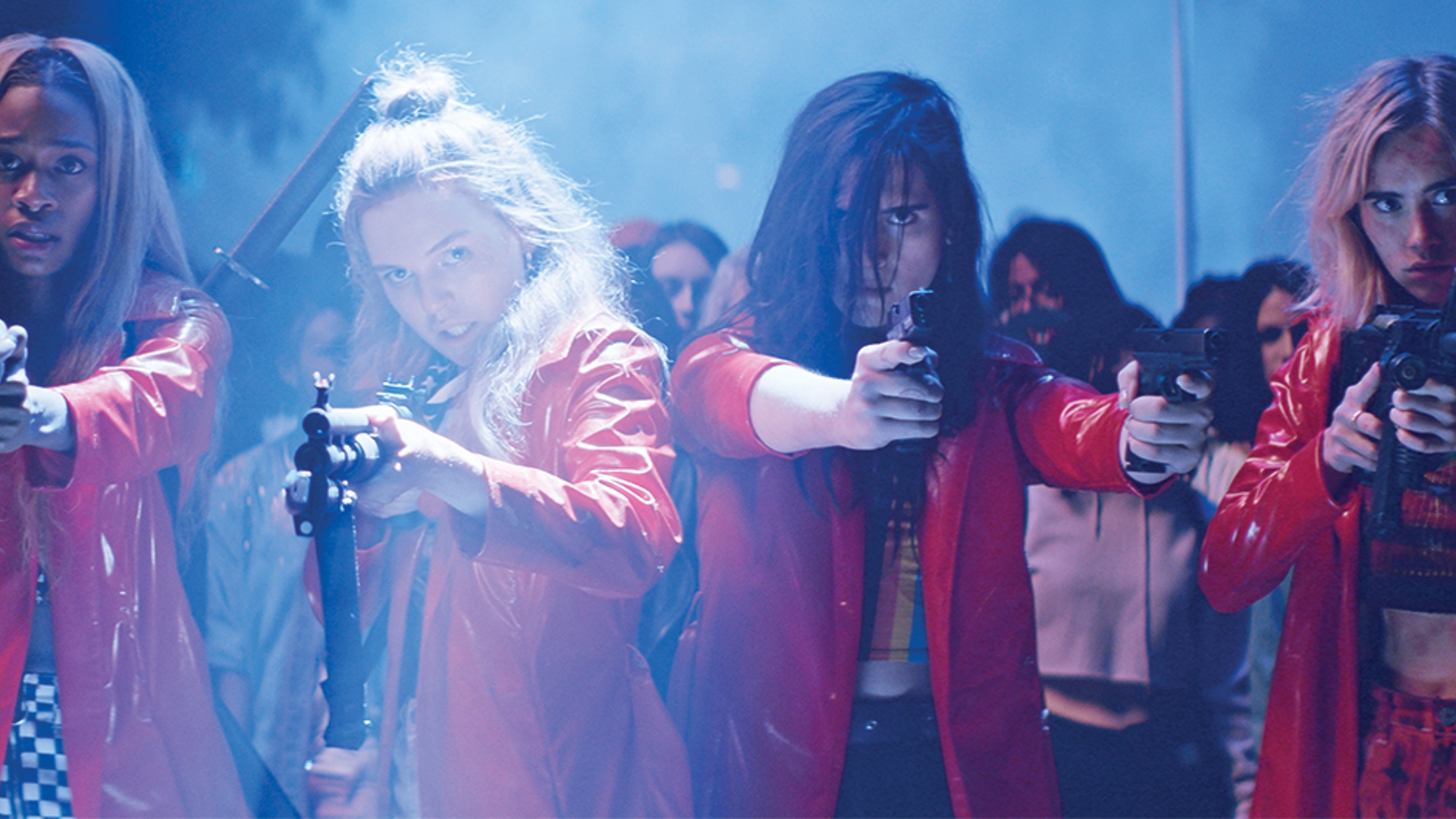 Assassination Nation
Assassination Nation
From its opening moments – with semi-satirical “trigger warnings,” overlaid on top of scenes from later in the film, and an ostentatiously Godardian title sequence – Sam Levinson‘s frenetic Assassination Nation announces itself.
This will be very Of The Moment (a horror-ish, #MeToo-suffused Salem Witch Trials riff, in the age of doxxing), and also rooted in the classics of cinematic provocation. Neither ambition really works out, but points for trying.
Levinson’s wears his influences like a verified Twitter check mark. This can cut both ways: like Tarantino, say, Assassination Nation has an acutely trained eye for kinetic violence and the Badass(TM) image; and like Tarantino, it effortlessly squanders goodwill in hot pursuit of cool-as-fuck revenge narratives that indulge in every impulse they castigate. The story – a town’s fury at the sudden absence of digital privacy lands full-force on four specific girls – doesn’t make much sense, and you can feel the film’s defense: what sense is there these days, though, dude? Patriarchy is wild out here.
Well, ok. The central performances are all strong, and the film’s sympathetic, rarely cloying treatment of the quartet’s lone trans member is commendable. But there’s an unshakeable sense that Assassination Nation started as an idea of combining influences (“The Purge but in Dogville but with the internet but …”) that played better as pitch than movie.
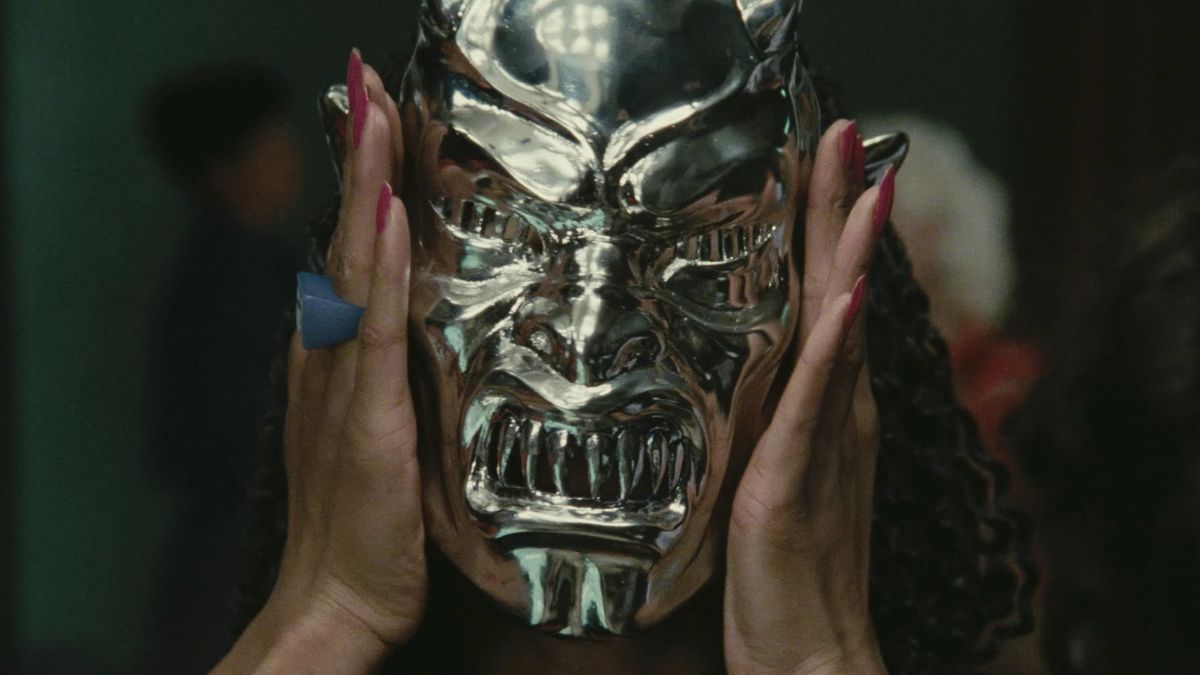 Demons
Demons
Decades ago, before “binge-watching” had entered the lexicon, I would sit in a smoky basement, listening to metal and ingesting horror movie after horror movie, all day and night, frequently on mute, from my friend Jon’s extensive VHS collection.
It was a year-round, bargain-bin Shocktober. This is because we were “cool” then, and “old” now.
You might guess that the Italians figured prominently in our proto-Shocktober rotation, and you would be correct. As such, I settled in for a Demons rewatch lo these many years later, and promptly realized that I remembered nothing about it.
This may have been because we were invariably stoned and had the volume turned down so often, or (just as likely) it may be that I’d only retained Demons 2. (Demons 2 rules.) Plus, turning the volume up means you get to rock out to this:
Awesome.
Dario Argento‘s name may dominate its poster art, but director Lamberto Bava should get proper credit for all of Demons‘ gooey greens and blood reds, not to mention maintaining the appropriate momentum for his cinema-bound, New Wave creature-feature nonsense.
Demons is compulsively watchable, provided you aren’t put off by all the vomiting, and setting the shenanigans in a movie theater gives it a fun meta-gloss. (Not that Bava and co. take this too far; “Shocktober splatter Kiarostami” this is not.) The climax is a case study in ludicrous plotting, but who cares? This is 80s midnight movie schlock served up with flair, Onibaba masks and Billy Idol and a lot of viscous reminders of the many ways a body can come apart.
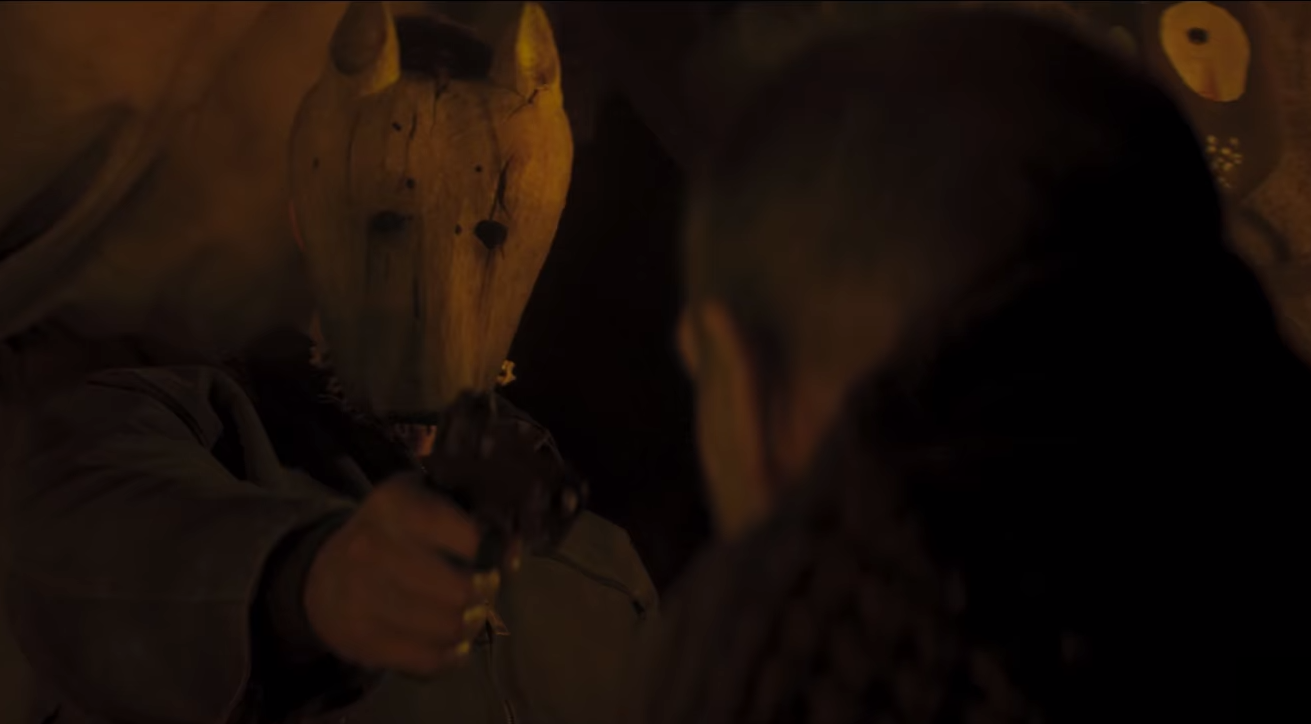 Hold The Dark
Hold The Dark
The year’s best horror movie seems destined to be shrugged out of the genre itself.
It almost certainly should find itself booted from anything calling itself “Shocktober”: too slow, too contemplative, too lacking in thrills, and, most of all, too ambiguous in approach and theme. (I don’t know if director Jeremy Saulnier and writer Macon Blair actually called this “Snow Country For Old Men” on set, but I hope they did.)
Oh well; everybody can choose their hall of horrors, and Hold The Dark occupies a central shadow corridor in mine. Saulnier mostly abandons the taut pulse of Blue Ruin and Green Room for a morose, often wordless fairy tale, spare as a sketch and encompassing as a prophecy. Walter Chaw puts it better than I can: Saulnier and Blair compose an Alaskan horror story
about mythologies–how they explain the capricious chaos of the world in terms understandable, using images that are universal to us. Mother, father, child, dark, blood, fire. He tells all of this complex story of revenge, betrayal, and the hunt in these broad archetypal strokes; it’s a film written on a cave wall, and at the heart of it what are a movie and a cinema but images animated by a flicker to be told in the company of others?
Jeffrey Wright is an aging wolf expert called upon to investigate the abduction of a child by wolves, and to kill the wolf; he accepts the mission in order to be closer to his own daughter, to retrieve her from lost time and chances. Alexander Skarsgård is the child’s dead-eyed father, introduced in a swirl of competing violences in Afghanistan, wounded and returning home to embark on other missions. Riley Keough is the boy’s mother, who may not be what she seems, pursued by Skarsgård, who may not want the things he appears to desire.
Hold The Dark is insistent on its title’s evocative metaphor. The dead child who sets the wilderness narrative in motion is an invisible ache at the film’s center, and the horror is in the absence of closure, of any possibility of closure or revelation, of the need to continue on in full knowledge that we will fail. “There’s something wrong with the sky. Have you noticed?” Saulnier and Blair’s haunted picture of absence chills.
 Pumpkinhead
Pumpkinhead
Pumpkinhead never really attained the horror cache of his monstrous contemporaries, probably in part because they called him fucking Pumpkinhead.
If A Nightmare on Elm Street had featured Mr. Pointy Wrinkles and Halloween mined jump scares from its protagonist, Capt. Stoneface McCrazystabs, they would’ve had a steeper hill to climb, too.
Alas, Pumpkinhead is both a frightening Stan Winston creation and a big ol’ Pumpkinhead. Winston also directed, competently enough, thereby setting the stage for other effects maestros to step behind the camera. The film itself is pretty by-the-numbers – Lance “this is my smile” Henricksen loses his comically beloved son to some dumb motorcycle-riding teenagers outside the family fruit stand (?), and calls on an ancient evil for vengeance.
We never really learn much about the town or the people or why the fruit stand, but things kick into gear once the monster gets a-monsterin’. This first Shocktober rewatch in 20 years made clear that my friends and I must’ve routinely skipped the first hour of the movie, an advisable approach. (Rick)
Liz’s entries
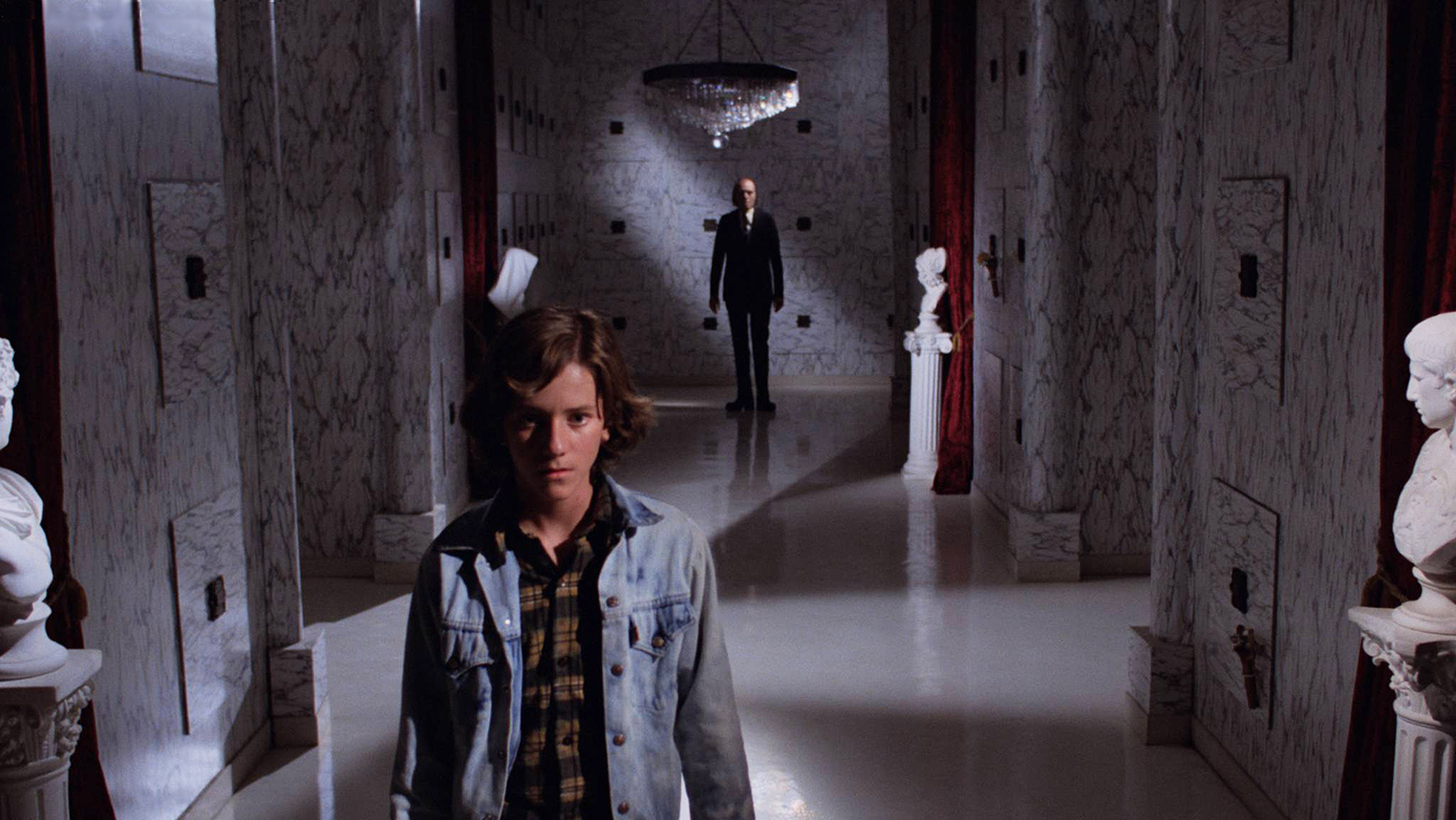 I haven’t really been feeling horror season this year. I started Unfriended: Dark Web, for example, and had to shut it off after the violence started. Anyone who knows me knows my undying love for the original, but something about watching the entirely-too-real human trafficking violence in the sequel was just un-stomachable this time. (And no poop ghosts that I could see! Come on.)
I haven’t really been feeling horror season this year. I started Unfriended: Dark Web, for example, and had to shut it off after the violence started. Anyone who knows me knows my undying love for the original, but something about watching the entirely-too-real human trafficking violence in the sequel was just un-stomachable this time. (And no poop ghosts that I could see! Come on.)
I did actually watch Phantasm again, and it continues to be one of my favorite things from the 70s. (Sequel-wise, I’ve only made it as far as Phantasm II, which felt like a film version of a 90s FMV horror adventure game.)
There’s almost too much to talk about (this movie just totally steals a scene from Dune, and no one told them not to), but the editing is totally out-of-this-world. Scenes meld into each other in a fantastic way, to the point where this may be the only film that earns its “all a dream” ending.
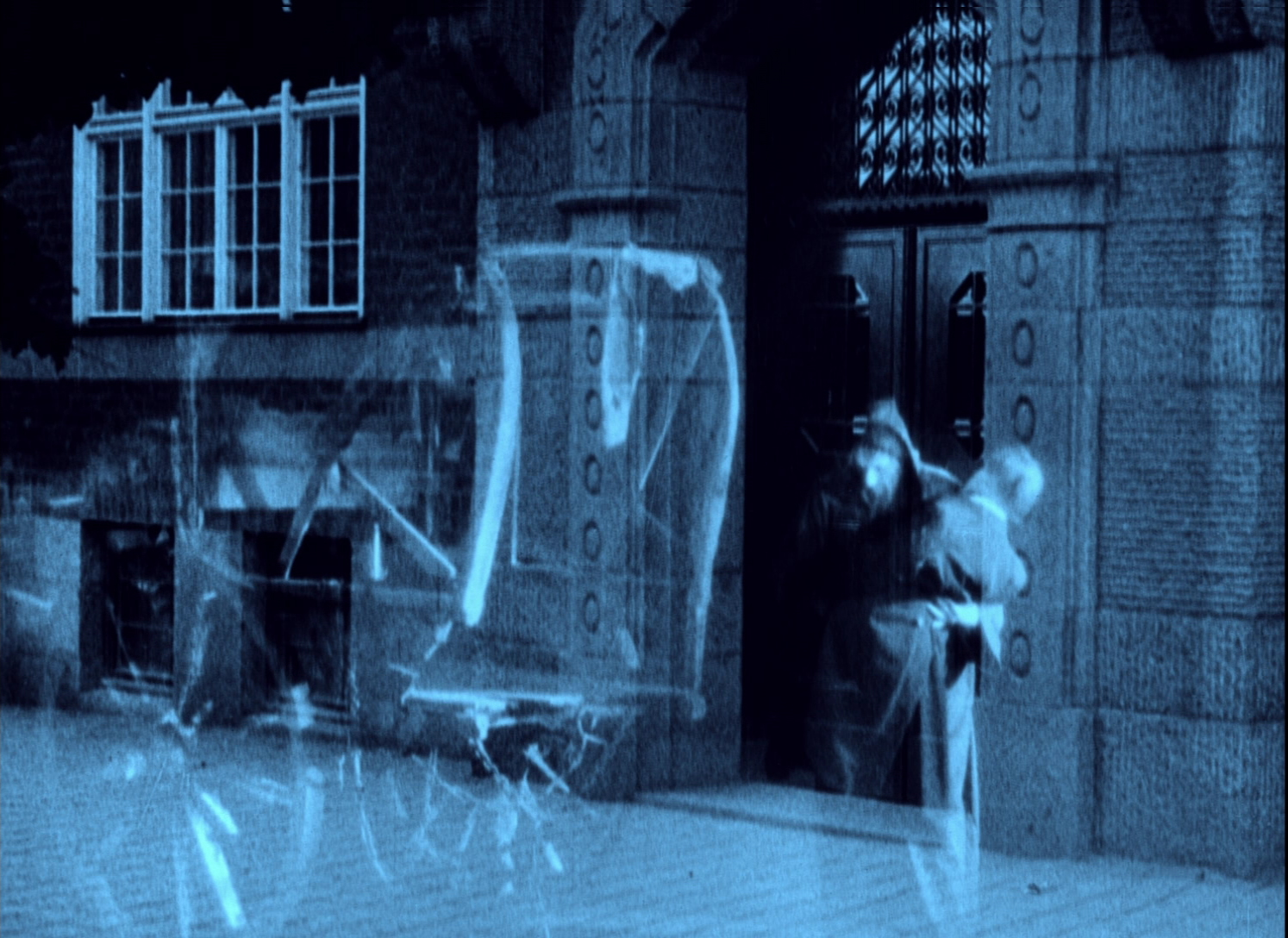 I also watched The Phantom Carriage, a fantastic ghostly Swedish silent from 1921. The last person to die on New Year’s Eve is forced to drive Death’s carriage for the next year, picking up the souls of the recently departed.
I also watched The Phantom Carriage, a fantastic ghostly Swedish silent from 1921. The last person to die on New Year’s Eve is forced to drive Death’s carriage for the next year, picking up the souls of the recently departed.
One year, it happens to be David, a consumptive ne’er-do-well abusive husband and general sack of shit; Death prepares him for his new job by taking him to the house of Sister Edit, a dying Salvation Army nurse who caught consumption from David and is desperate to help him “turn over a new leaf” before she dies.
All of this justifies flashbacks that cover David’s career of astonishingly petty monstrosity, and leads up to a real goofball ending.
Oh well – when your film is based on a novel written because someone paid the author to warn the public about the dangers of consumption, a melodramatic ending is what you should expect.

